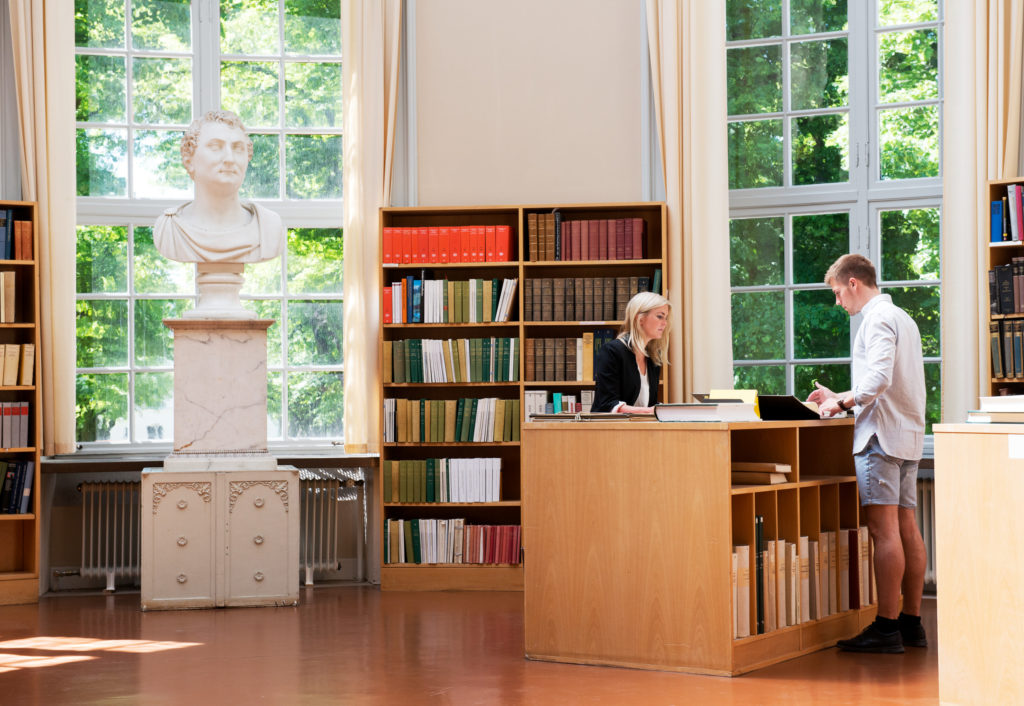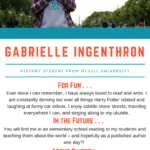I love books. Ergo, I love libraries.
So naturally, I didn’t stand a chance the very first time I went to study in one of the campus libraries. My fingers were itching to grab at every title I saw and carefully turn the pages of the most delicate books I could find. You know those kids who stare in wide-eyed wonder when they go to Disney World for the first time? Yeah, that was me in the Carolina Rediviva Bibliotek. I think I distracted my neighbors by doing absolutely nothing except sit and stare at all the book shelves and architecture of the main hall for the first ten minutes I was there. It was just so beautiful.
What’s fun about the layout of some of the libraries is that the desks are often scattered throughout and in between the shelves – so if you’re a diehard book fan like I am, don’t be surprised if an interesting title on a nearby shelf draws your attention away from your work. Uppsala has a whole slew of libraries, filled with books and magazines and journals and even postcards (yes, you read that correctly). In total there are eleven, not including all the mini libraries each student nation (13) has at its home base. I have yet to visit every single one, but it’s on the bucket list to do before I leave Uppsala.
Now, in order to have access to all these beautiful books, one of the first things to do once you’ve settled in Uppsala is to is march yourself to the help desk at the main library and sign up for a free library card. If you can, memorize the number so that you can still request books on days you accidentally forget it at home (like I do, almost every single time I go to the library).
Next, familiarize yourself with the online library search engine (which you can find by Googling ‘Uppsala University Library’) because it will become your best friend when you have assignments due. Most of the time you can request a book you need online using your library card number and a librarian will have it ready for you in a few hours, but be prepared to spend some quality time searching the shelves if not – that’s where finding these books can be tricky. Be sure to look at the library floor plans to understand how they are organized by topic and by category letter, which you will find when you look up the book online (there are a number of computers in each library available to search for books or to use for university-related purposes). Each library is different so don’t be afraid to ask a librarian for help. They’re very nice and always willing to explain the system to you.
Another thing to be aware of is that there might not always be online copies of the literature you need for class. Most of my required readings for my courses at my home university were available online, so this was definitely a bit of a surprise. A lot of the history books I need here are only available in physical copy – of which there often only exists one or two in total. Thus, when you’re in a class with (at least) fifteen other students all vying to get their hands on the same mandatory book for the seminar that week, it can feel a bit like the Hunger Games as you race to get it done before someone snatches up the book for the whole week.
The best solution in instances like those is to overcome any shyness you may have, reach out to all your classmates, and create a Facebook group with them in it. This way, you can divvy up the readings amongst each other if you’d like, as well as coordinate sharing the books and resources. It’s a great way to stay on top of huge reading loads, and an easy way to make friends in class!

Credits: Cecilia Larsson Lantz/Imagebank.sweden.se
One of the coolest things about these libraries is that there are people of almost all ages using it. It’s not unusual to find yourself sitting across from a professor or an older Masters’ or PhD student at a desk as they do their research. I personally find this kind of neat, as you get to see your professors in the same boat as you are: spending lots of time at the library as they work to hit a deadline. It definitely makes them more relatable (well that, and the fact that you typically refer to them by their first name here in Sweden).
Lastly, for your own sanity, many of you may be relieved to know that most of the libraries are in buildings with cafeterias and/or bakeries that can provide you with coffee and delicious cinnamon buns to help motivate you on a work day. Furthermore, there are microwaves everywhere in case you prefer to bring a lunch from home, with many tables just outside of the library-zones for you to eat at.
One thing to know, however, that the university’s libraries actually have limited hours. I found this a bit unfortunate, as they typically close between 6-8pm and I have yet to discover one that remains open later. Nonetheless, there are a great number of books in English and lots of variety in the libraries, which are each dedicated to different areas of study (i.e. law, economics, humanities, etc), making them an excellent resource. The atmosphere is very pleasant, the architecture is lovely, and the rooms have plenty of windows to allow sunlight in so that you don’t end up with too much of a Vitamin D deficiency.
So whether you are someone who love books as much as I do or you just need somewhere to do research and stay on top of your workload, I highly recommend exploring the libraries. They’re a great asset to the University!
If you’re interested to know more about the libraries from a historical perspective, check it out!
/Gabrielle



Such a pleasant read!